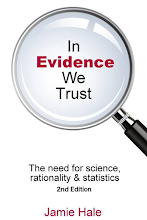Focused relaxation can lead to an array of benefits.
Benefits of Focused Relaxation
Activities
Improved attention
Decreased blood pressure
Decreased heart rate
Sense of calm
Meta-awareness (being exceptionally aware of the
contents of the mind)
Recognizing different thought patterns and letting
them go
Non-judgmental acceptance of thoughts
Decreased anxiety
Improved sports and academic performance
There is a possibility that myself and colleagues may design some apps. that feature focused relaxative exercises. Below are a couple of exercises that can be used for focused relaxation. The time periods and frequency should be adjusted accordingly.Controlled
Breathing
In this activity participants will practice controlling
their breathing for 5 minutes. Participants will generally perform this activity
while seated. Instructions below:
Close your eyes and inhale through the nose, while
concentrating on feeling the sensations associated with the inhale; your
stomach should expand and the inhale is slow and controlled. Next, slowly
exhale; don’t force out the air, just let it go through the nose. With each
exhale count; after 10 total breaths (full inhale and exhale) restart the
count. If your mind starts to wander gently bring it back to full focus on the
sensation of breathing and the counting of the number of breaths you take. You
will be informed when 5 minutes have elapsed. This a
concentrative mindfulness exercise that has been shown to provide an array of
benefits.
Progressive
Muscle Relaxation
In this activity participants will tense and then relax
various body parts. This activity is generally performed while seated or lying
down. Instructions below:
Focus your attention on your lower body (feet, legs,
hips) and tense your lower body to level 6 (that is from a scale of 1-10); hold
the tension for 5 seconds and then release. When you release you should feel
total relaxation. Focus your attention on your torso (chest, back, mid-section)
and tense your torso to a level 6 (that is from a scale of 1-10); hold the
tension for 5 seconds and then release. When you release you should feel total
relaxation. Focus your attention on your arms and shoulders and tense them to a
level 6 (that is from a scale of 1-10); hold the tension for 5 seconds and then
release. When you release you should feel total relaxation. Now tense your
entire body to a level 8 (that is from a scale of 1-10); hold the tension for 5
seconds and then release. Repeat the cycle (a cycle includes the level 6 holds
followed by the level 8 holds) 2-3 times.
This is a great activity for
learning to feel tension throughout the body and differences between being
tense and being relaxed.
A primary goal in learning focused relaxation is being able to relax in different contexts. When first learning I recommend practicing in a controlled, familiar, relaxing place. As your skill progresses practice in places that aren't so comfortable, or even in environments that are perceived as relatively stressful. It may also be a good idea to practice these activities after an intense workout. Your workout highly activated the sympathetic nervous system, now your relaxative activities will help achieve a balance and highly activate the parasympathetic system.
Different types of meditation and hypnosis involve focused relaxation.
Is Hypnosis Real?
My first exposure to hypnosis was as a sophomore in college. I attended an event on campus featuring a stage hypnotist, the auditorium packed with students and faculty. Many unusual behaviors occurred on that stage. Some hypnotized people lost the ability to count, while others were stuck in their chairs; still others tried to sing classic melodies. All these behaviors were subject to commands from the hypnotist. These strange behaviors often characterize what happens during stage hypnosis. Stage hypnosis and hypnotherapy are different; stage hypnosis is more for entertainment, while hypnotherapy has been used in a range of settings to help people with various problems. read full article
Meditation Matters
My interest in meditation was sparked when I watched a video of neuroscientist Sam Harris speaking on the topic. Harris spoke passionately about meditation and how over the years he had gained extraordinary benefits from meditating. My curiosity peaked when I listened to a podcast in which Harris guided Richard Dawkins through a brief meditation. Dawkins let Harris know he didn’t enjoy it; he found it uncomfortable and didn’t understand its purpose or value. read full article





